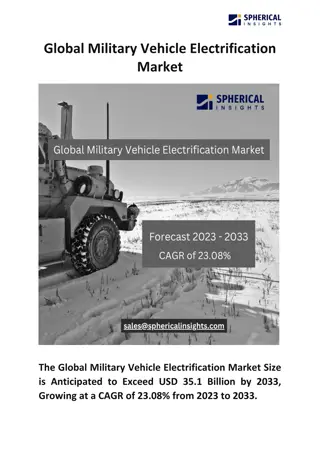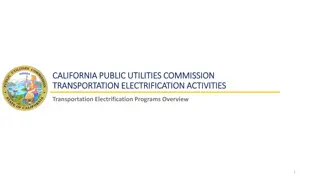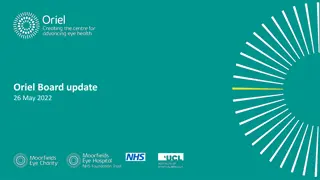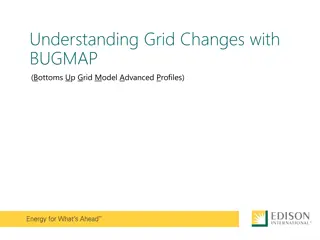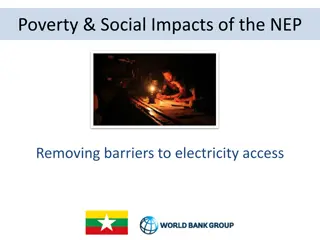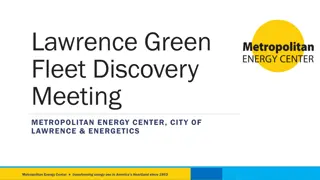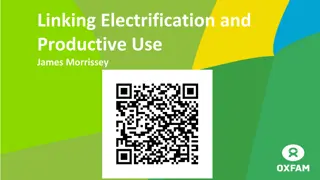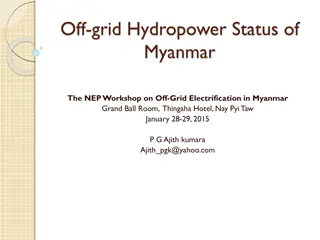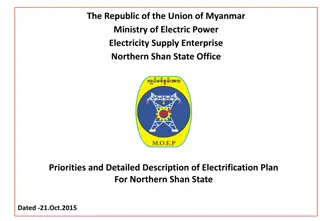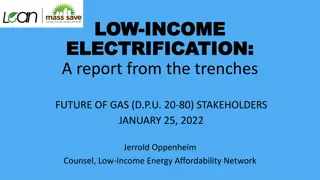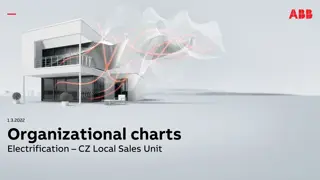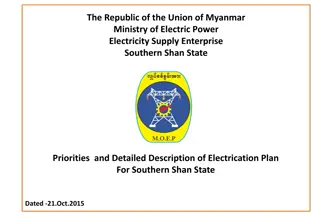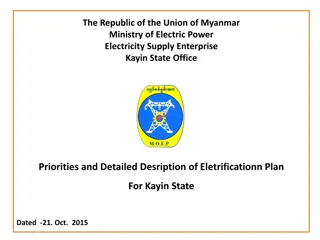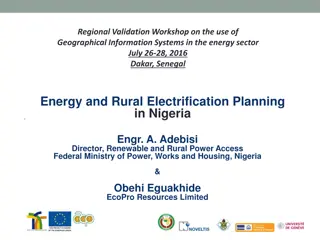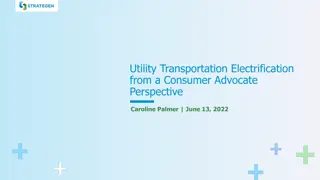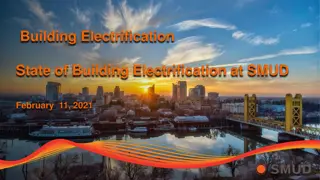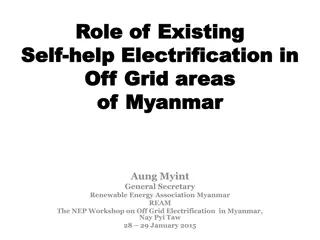Integrated National Electrification Programme Overview
INEP is a government initiative providing capital subsidies to address the electrification backlog in residential dwellings. Established in 1991, it aims to manage planning, funding, and implementation to tackle the backlog effectively. The program follows policy guidelines, manages funding models, and focuses on stakeholder engagement to ensure success. With a clear emphasis on effective programme management, compliance, and monitoring, INEP plays a crucial role in advancing electrification efforts.
Download Presentation

Please find below an Image/Link to download the presentation.
The content on the website is provided AS IS for your information and personal use only. It may not be sold, licensed, or shared on other websites without obtaining consent from the author. Download presentation by click this link. If you encounter any issues during the download, it is possible that the publisher has removed the file from their server.
E N D
Presentation Transcript
CONTENT Introduction and Background Funding and Implementation Model Electrification Policy Guidelines Programme Management Stakeholder Engagement Funding Allocation Criteria Allocation Process Monitoring and Reporting Programme Performance Challenges Mitigations Applied Programme Budget Program Funding Allocation 2
INTRODUCTION AND BACKGROUND INEP is an initiative of government to provide capital subsidies to municipalities to address the electrification backlog of permanently occupied residential dwellings. This initiative started in 1991 when Eskom was responsible to manage and monitor the electrification process. From 2001 government assumed responsibility for planning, funding, monitoring and evaluation of the electrification programme. The funds are gazetted on an annual basis under DoRA. The purpose of the Integrated National Electrification Programme (INEP) is to manage the electrification planning, funding and implementation process with the aim of addressing electrification backlog. 3
FUNDING AND IMPLEMENTATION MODEL Eskom Grid Electrification Municipalities DMRE Non-grid Electrification DMRE 4
ELECTRIFICATION POLICY GUIDELINES Implementation of electrification programme is guided by several policy guidelines to ensure that funded projects eventually fulfills the mandate of the Department. 1. Suite of Supply policy covers all project categories and is the fundamental policy that highlights minimum technical aspects to be adhered to. Bulk Infrastructure 2. Bulk Infrastructure policy deals with requirements for funding of substations and distribution supply lines. Non-grid Electrification Farm Dweller Houses 3. Informal Settlement policy deals with steps to follow in sourcing funding for the electrification of informal settlement. Suite of Supply 4. Farm Dweller Houses policy highlights criteria for funding of electrification of farm dweller houses. 5. Non-grid electrification infrastructure. Electrification of policy that provides are guidelines from for Mixed Developme nts and Developer Projects houses far electricity Informal Settlement 6. Mixed Developments and Developer Projects outline the process and requirements for funding the electrification of mixed housing developments and the minimum level of service. 5
PROGRAMME MANAGEMENT ENERGY PROGRAMMES & PROJECTS INEP Capital Programme IGR Planning To enhance relations between INEP and other stakeholders involved in the electrification programme and are responsible for broadening access to basic services. To manage the electrification programme through development of the integrated electrification plan, bulk infrastructure plan, and the non-grid electrification plan. To ensure compliance with financial legislation and technical standards. 6
STAKEHOLDER ENGAGEMENT Formal engagements happen through the National Electrification Advisory Committee (NEAC). Its purpose is to advice on key strategic matters related to the electrification programme. The NEAC meets on a quarterly basis. The stakeholders includes: National Treasury Department of Human Settlements, Water and Sanitation Department of Cooperative Governance and Traditional Affairs South African Local Government Association (SALGA) Association of Municipal Electricity Utilities (AMEU) Municipal Infrastructure Support Agent (MISA) Eskom SIP 10 Engagements also take place through Provincial Energy Forums and MuniMECs 7
FUNDING ALLOCATION CRITERIA Rural bias High backlogs Completed low cost houses Continuing projects Ease of access to bulk infrastructure supply Focus on past performance Focus on government priorities (priority districts, old mining towns, etc.) Projects part of the municipal IDP 8
ALLOCATION PROCESS June January ------------------- February ------------------- Allocations gazetted on Division of Revenue Bill -------------------- Municipalities invited to apply for funding using indicative allocations/backlog Awaiting funding approval from National Treasury July December ------------------- March ------------------- Signing of contracts ------------------- Initial site verifications and technical assessments done on selected projects Funding recommendations sent to National Treasury for approval August ------------------- Project analysis and verification of outstanding technical information November ------------------- April ------------------- Funding recommendations presented at the NEAC Commencement of project implementation September ------------------- Final site verifications and technical assessments including projects for mid- term review October ------------------- May ------------------- Project implementation continues Funding recommendations for Next Financial Year projects and Current Year projects mid-term review 9
MONITORING AND REPORTING Contract Management Project Management Energy Forums are held monthly or quarterly where feedback is received from municipalities Where municipalities are not reporting, non- compliance letters are issued The region visits projects based on a schedule or as required based on project status Project progress is monitored via a milestones report spreadsheet Municipalities submits progress reports on a monthly basis 05th of each month Due date for reports from municipalities 20th of each month Consolidated report is submitted to Treasury 10th of each month Due date for reports from regions 28th to 31st of each month Withholding letters sent to non-complying municipalities 10
PROGRAMME PERFORMANCE Between 1991 and end of March 2019, over 7.4 million households have been electrified and connected to the national grid and 160 000 connected through the non-grid technology. Number of households connected through the grid and non-grid over the MTSF (2014 - 2019) PROGRAMME TARGET PROGRESS PERCENTAGE 1 285 178 102,81% 1 250 000 Grid 85 993 81,90% 105 000 Non-grid 1 355 000 1 371 171 100.01% Total 11
PROGRAMME PERFORMANCE NUMBER OF HOUSEHOLDS CONNECTED TO THE GRID PER PROVINCE OVER THE MTSF Province 2014/15 2015/16 2016/17 2017/18 2018/19 TOTAL EC 37 820 38 535 60 704 66 243 47 839 251 141 FS 14 854 2 695 7 645 4 586 5 238 35 018 GP 22 037 13 963 22 226 11 876 22 270 92 372 KZN 39 621 54 195 82 970 70 765 62 867 310 418 LIM 40 103 57 430 54 544 58 666 44 166 254 909 MP 28 175 28 993 32 273 33 496 21 381 144 318 NW 26 381 16 740 23 960 16 271 19 370 102 722 NC 4 881 6 074 5 454 3 400 6 561 26 370 WC 19 583 12 387 12 200 10 527 13 213 67 910 Total 233 455 231 012 301 976 275 830 242 905 1 285 178 12
PROGRAMME PERFORMANCE 2017/18 and 2018/19 Financial Years 2017/18 FY PROGRAMME Allocations (R 000) Expenditure End FY (R 000) Planned Connections Reported Connections Municipal 2 087 048 1 013 935 84 431 60 311 Eskom 3 846 154 2 818 475 201 200 215 519 Non-Grid 183 671 160 836 19 271 16 875 2018/19 FY PROGRAMME Allocations (R 000) Expenditure End FY (R 000) Planned Connections Reported Connections Municipal 1 904 477 994 683 84 660 51 320 Eskom 3 262 031 2 229 332 180 000 191 585 Non-Grid 185 473 125 041 18 712 13 090 Spending in line with budgets and achievement of annual targets by municipalities remain a concern 13
CHALLENGES Project Implementation: Municipalities implementing uncontracted projects. The underperformance in the KZN and EC regions is due to late appointment of Service Providers outstanding outages. Some municipalities have completed construction of projects however they do not provide supporting documents. Municipality still continue to change projects or plans without communicating with department prior to implementation. This trend is negatively affecting the expected targets. Municipalities under administration implementing INEP projects. Municipalities are implementing in areas where there is a need for bulk infrastructure (30% of the total allocation for 2019/20 FY will be spent on bulk infrastructure projects). Local communities hijacking/stopping projects. Illegal occupation of houses. 14
CHALLENGES Planning: Lack of infrastructure maintenance (old infrastructure) Lack of technical capacity in the municipalities Mushrooming of informal settlement Lack of long-term plans in municipalities Some villages are far from grid and sparsely populated and therefore only suitable for Non-grid which is not well received in some communities Backlog figures exacerbated by growth of extensions near electrified areas and inability of certain municipalities to formalise these. Monitoring: Limited resources (financial & human) within the Department 15
MITIGATIONS APPLIED Established Project Steering Committee/regional forums. Enhanced/tightening monitoring and evaluation through contractual arrangements. Discussion are ongoing with Treasury regarding funds to alleviate historic infrastructure rehabilitation backlog. Support to non-performing municipalities through working sessions and Energy Forums. Increased stakeholder engagement and technical support to the incapacitated municipalities. Escalation of challenges to Provincial EXCO through political Munimec. 16
PROGRAMME BUDGET MTEF (2020/21 to 2022/23 Financial Years) Baseline 2019/20 (R 000) 2020/21 (R 000) 2021/22 (R 000) 2022/23 (R 000) PROGRAMME Grid (Municipal) 1 863 328 1 977 364 2 131 018 2 252 666 Grid (Eskom) 3 374 053 3 062 738 3 820 670 3 967 512 Total Grid Budget 5 237 381 5 040 102 5 951 688 6 220 178 Non- Grid 212 941 224 653 237 009 245 819 Total Grid and Non-Grid 5 450 322 5 264 755 6 188 697 6 465 997 Allocations for Metros have been moved to Urban Settlements Development Grant (USDG) from 2019/20 FY There is a proposal by National Treasury to reduce this MTEF budget by 5% (R263 mil) for 2021/22 FY, 6% (R371 mil) for 2022/23 FY and 7% (R453 mil) for 2022/23 in order to fund other priority programmes. Discussions still ongoing between DMRE and NT. 17
PROGRAMME FUNDING ALLOCATIONS 2019/20 FY PROVINCE DIRECT MUNICIPALITY (R 000) THROUGH ESKOM (R 000) TOTAL (R 000) PLANNED HOUSEHOLD CONNECTIONS 387 708 Eastern Cape 1 219 947 831 239 59 885 89 531 Free State 169 410 79 879 6 105 110 358 Gauteng 337 087 226 729 14 313 410 867 Kwazulu-Natal 1 282 059 871 192 64 300 246 548 Limpopo 699 581 453 033 39 873 193 232 Mpumalanga 532 674 339 442 21 089 172 205 Northern Cape 356 551 184 346 9 250 102 948 North West 393 857 290 909 20 490 149 931 Western Cape 247 215 97 284 13 642 TOTAL 5 237 381 1 863 328 3 374 053 248 947 Detailed project lists at Municipal level has been shared with the committee secretariat For some municipalities, funding is mainly for bulk supply infrastructure. 18





